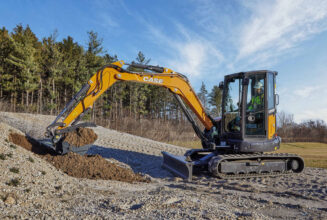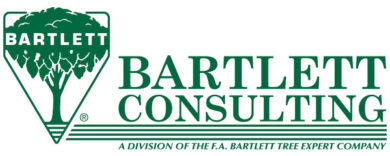Tips for Pest Identification and Management
By Jennifer Lemcke
At some point, every homeowner and gardening enthusiast will fight an epic battle with natural pests and weeds. With more than 850,000 insects that have been identified, insect control is essential. As a lawn care professional it is imperative to do the dirty work, becoming an expert in identifying pests, determining their life cycle and managing the insect population. These skills will enable you to educate homeowners about pest management and the essential services they can request to help fight off insects that will damage their lawn.
Detecting pests
Detecting the presence of an insect is the first step in good pest control. Insect management begins once the early signs of injury or significant numbers of insects are observed. If the turf looks damaged, wilted, and water-starved, then an insect may be involved. Since some insects can only be controlled at certain times during their life cycles, it is essential to identify three key factors:
- Type of insect
- The insect’s life cycle
- The level of infestation
Because a lawn is a monoculture, if a pest problem takes hold, it can destroy a lawn within a matter of days.
Top pest offenders
Various regions of the country experience unique pests. However, there are some fairly widespread turf pests that affect large areas of the United States. By understanding each type of pest and its life cycle you will be able to develop a pest management schedule to help manage your customer’s pest problems. Some of the top offenders nationwide include white grub, chinch bugs and leatherjackets.
White grub
These small, plump, white larvae live below the soil and viciously chew on grass roots. Once the grass roots are destroyed, the turf will appear yellow in patches, just as if the lawn is dying out. The damage looks quite similar to symptoms of dryness, and many mistakenly assume that the lawn needs only water to restore a lush, green appearance. Other symptoms to watch for include animals such as skunks and raccoons digging up the lawn and birds feeding on grubs — leaving pencil-sized holes. Often, damaged turf will roll back like a carpet. Serious damage can occur in the spring, summer and fall; and if the problem is ignored, the patches will get larger. The damaged areas will then fill in with weeds or crabgrass, so the best time to treat grubs is preventively rather than curatively.
Chinch bugs
These small insects live in and feed on lawn grasses and can destroy a lawn with little warning. They live above the soil and feed on living grass plants by means of a piercing mouthpart called a stylet — sucking the juices out of the plant. The damage looks quite similar to drought symptoms and, again, many mistakenly assume that the lawn needs only water to restore its lush green appearance. Look out for suspicious brown patches starting to appear in the lawn and, unlike fungal disease, the patches will not be symmetrical. If you determine the brown patches are due to lack of water, you can offer correct watering procedures. Chinch bugs survive the winter and come out of hiding in the spring. Here they will mate and the females will seek a hot dry location in which to lay their eggs, which will hatch in about three weeks’ time. The eggs are laid very close together so that when they hatch the young begin feeding and small patches of small grass begin to appear. If the problem is ignored, the patches get bigger. Chinch bugs can totally ruin a lawn in three weeks if no control methods are taken.
Leatherjacket
These flies, which also resemble mosquitoes, are primarily in coastal areas and feed on roots of grass plants resulting in a yellow-colored and wilted lawn. If heavy infestations occur, a lawn can become brown or, even worse, the turf can completely die. Adults emerge mid July through early October and begin mating immediately. Eggs hatch within a couple of weeks and larvae begin feeding throughout the fall and spend the winter below the surface of the lawn. By March and April, heavy feeding occurs as larvae reach maturity. Larvae continue feeding until about mid July. At this time they begin to pupate, then later transform into adult crane flies. Leatherjacket larvae are more easily controlled in fall or early winter while they are still young. Spring treatments are the best to control this pest.
Management
When it comes to pest management, lawn care professionals must treat the issue immediately in order to restore the lawn back to its original, healthy state and to prevent the problem from reoccurring.
Normally, nature creates a balance between insects, natural predators and food supply. But if something — such as a change in the weather pattern — happens to change that balance, then insect populations increase and may cause extensive damage.
In addition to a solid pest management program that may include preventive and curative strategies, aeration is one annual service that can significantly increase the vitality of a lawn, and also help to establish a sound root foundation that will be better able to withstand unwanted pests. Encouraging homeowners to aerate their lawn during the fall season will enhance the development of a deep root system and break through thatch buildup. Aeration will also improve drainage along with air, fertilizer, and water movement — resulting in greater resistance to insects, disease, drought and heat stress.
Core aeration improves a lawn’s health and beauty, optimizes root development and reduces thatch and associated problems. Excessive thatch causes soil compaction making it difficult for roots to go, limiting nutrition movement through the soil. When aerating your client’s lawn, make sure that the removed thatch is no larger than 1/2 inch.
Fall fertilization and weed control are other services to offer your customers that can provide lawns with the nutrients needed to produce strong roots and grass that resists weeds, disease and insects. It’s best to tackle fall weeds before cold weather sets in. This gives turf the best head start when warmer weather returns in the spring.
All in all, beautiful yards are created by providing the best growing conditions based on a solid foundation of inputs such as fertilizers, water, seed and control products, when necessary. Remember, pest management starts with overall plant/turf health. In turn, healthy lawns help the environment by producing oxygen, cooling the air during hot weather, and trapping and absorbing urban dust and pollution.
Jennifer Lemcke is chief operating officer of Turf Holdings Inc/Weed Man USA, Canada’s No. 1 lawn care provider and a growing network of locally owned and operated lawn care professionals in the United States providing environmentally responsible fertilization, weed control and integrated pest management services. Lemcke helped launch Weed Man in the United States, and is responsible for training and supporting all Weed Man sub-franchisors and franchises, which has grown to more than 230 territories across the country. Dedicated to growing the Weed Man brand in the United States, Lemcke is involved in the Professional Landcare Network (PLANET), and has served as Management Team of PLANET and Chair of Governance Committee. She can be reached at jlemcke115@aol.com or 905-579-4000, ext. 115.



